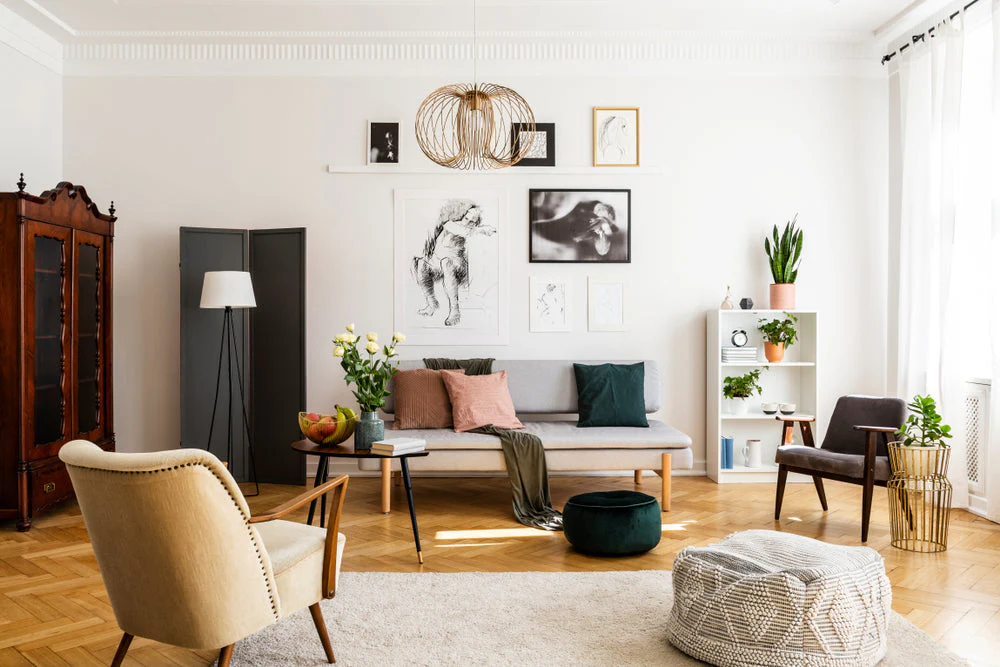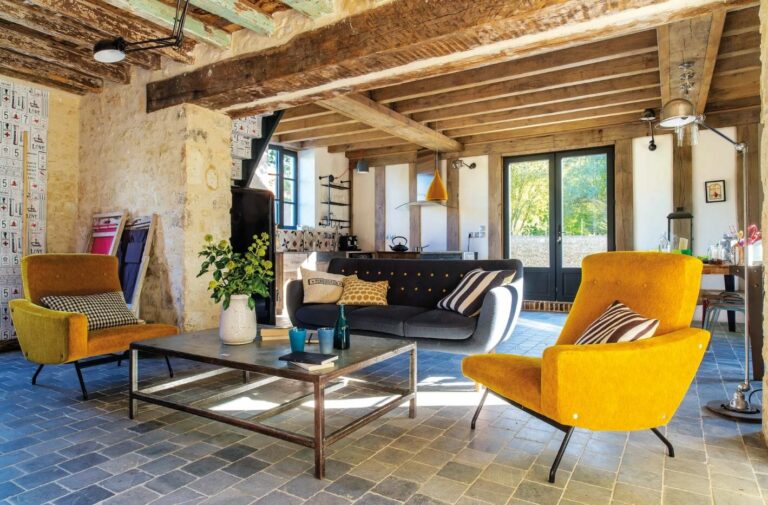Vintage interior design evokes nostalgia and charm, creating warm, inviting spaces and rich with history. This style is more than just collecting old items; it’s about curating an environment that tells a story by carefully selecting past pieces. Whether you are drawn to the elegance of the 1920s, the boldness of the 1960s, or the rustic charm of farmhouse décor, there are timeless principles that ensure vintage design remains stylish and relevant. Here’s how to pull off vintage interior design that still works today.
Understanding the Essence of Vintage Design
Vintage design is characterized by including items from previous decades, typically from the early to mid-20th century. This style emphasizes the quality and craftsmanship of the past, highlighting unique, often handcrafted pieces. The appeal of vintage design lies in its ability to blend different eras seamlessly, creating a timeless, cohesive look. Understanding this essence is crucial in achieving an authentic vintage aesthetic in your home.
Curating with Care: Selecting the Right Pieces
The foundation of vintage interior design is carefully selecting furniture and accessories. Each piece should tell a story or hold sentimental value. Look for items that showcase the craftsmanship and style of their time, such as a mid-century modern coffee table, an Art Deco lamp, or a Victorian-era armchair. These items are often found in antique shops, flea markets, or online vintage stores. When curating, ensure that each piece complements the overall aesthetic of your home.
Mixing Eras: Achieving a Cohesive Look
One of the key aspects of successful vintage design is the ability to mix pieces from different eras without creating a chaotic look. This requires a keen eye for design and understanding of how different styles can harmonize. For instance, pairing a 1950s dining table with 1970s chairs can create a unique yet cohesive dining area. The trick is to find common elements, such as color, texture, or material, that tie the pieces together.
Balancing Vintage and Modern
While the focus is on vintage, incorporating modern elements can prevent your space from feeling outdated. This balance is essential to making vintage design work today. Modern touches, like a sleek sofa, contemporary lighting, or minimalistic décor, can provide a fresh contrast to vintage pieces, creating a dynamic and timeless look. The key is to strike a balance where neither the vintage nor the modern elements overpower each other.
Color Schemes: Choosing Timeless Palettes
The color palette plays a significant role in vintage interior design. Opt for colors that were popular in the era you are drawing inspiration from. Earthy tones, pastels, and muted shades are often associated with vintage aesthetics. For example, a 1960s-inspired room might feature avocado green, mustard yellow, and burnt orange, while a 1920s-inspired space could include soft pinks, deep blues, and metallic accents. Choosing a timeless palette ensures that your design remains stylish over the years.
Textures and Fabrics: Adding Depth and Warmth
Textures and fabrics are crucial in vintage design, adding depth and warmth to the space. Incorporate materials such as velvet, silk, and linen, commonly used in past decades. Vintage rugs, patterned curtains, and upholstered furniture can enhance a room’s nostalgic feel. Mixing textures, like a leather sofa with a knitted throw or a wooden coffee table with a lace tablecloth, can create a cozy and inviting atmosphere.

Incorporating Vintage Accessories
Accessories are the finishing touch that brings a vintage design to life. Items like old books, vintage clocks, framed photographs, and retro knick-knacks add character and charm. Displaying collections, such as antique teapots or vintage vinyl records, can personalize your space. These accessories should be thoughtfully placed to avoid clutter and ensure they enhance rather than overwhelm the room.
Lighting: Setting the Mood
Lighting is essential in any interior design, and vintage is no exception. Vintage lighting fixtures, such as chandeliers, sconces, and table lamps, can add a dramatic and authentic touch. Look for pieces with unique designs and patinas that reflect the era you’re inspired by. Consider the light’s warmth and brightness to create the desired ambience. Combining vintage lighting with modern solutions, like LED bulbs, ensures efficiency without compromising style.
Creating Focal Points
In vintage design, creating focal points helps to anchor the space and draw attention to standout pieces. This could be a beautifully restored vintage fireplace, a statement piece of furniture, or an art deco mirror. Focal points give structure to a room and highlight your most cherished items. Arrange furniture and accessories around these focal points to create a cohesive and visually appealing layout.
Sustainable and Ethical Choices
Vintage interior design inherently promotes sustainability by giving new life to old items. However, it’s important to make ethical choices when sourcing vintage pieces. Opt for reputable sellers and be mindful of the origins of your items. Restoring and repurposing vintage furniture preserves history and reduces waste, making your design choices more environmentally friendly.
Personalizing Your Space
Ultimately, your home should reflect your taste and style. While staying true to the vintage aesthetic is important, don’t be afraid to infuse your personality into the design. Mix and match items that resonate with you, whether they strictly adhere to a specific era or not. Personal touches, like family heirlooms, travel souvenirs, and DIY projects, can make your vintage interior uniquely yours.
Timeless Charm with a Modern Twist
Pulling off vintage interior design that still works today involves a delicate balance of old and new. By carefully curating pieces, blending eras, and incorporating modern elements, you can create a nostalgic and timeless space. The charm of vintage design lies in its ability to tell a story, evoke emotions, and create a warm, inviting atmosphere. With thoughtful selection, attention to detail, and a personal touch, you can achieve a vintage aesthetic that feels both historic and



